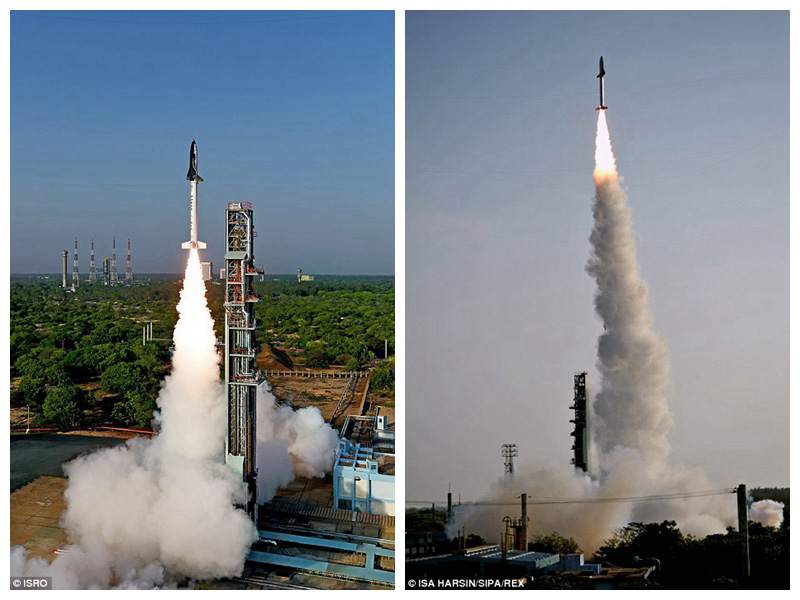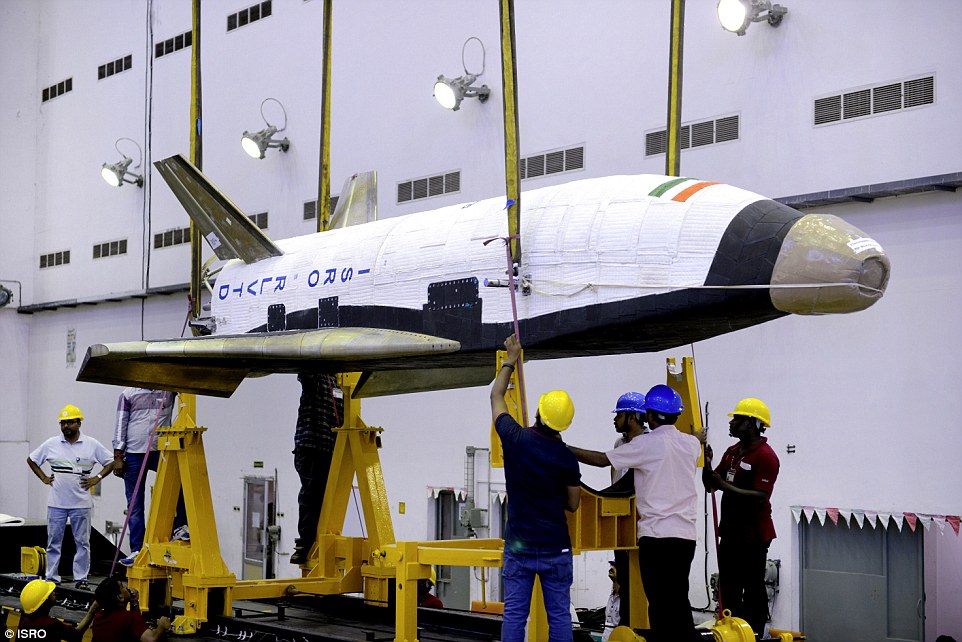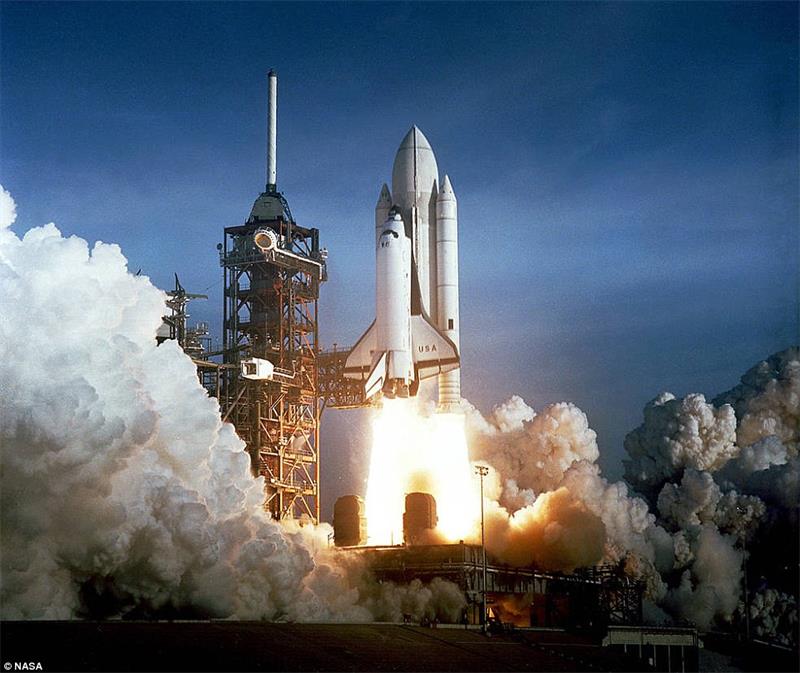


The rocket booster carrying RLV-TD lifted off from the First Launch Pad at Satish Dhawan Space Centre, Sriharikota, also known as Sriharikota Spaceport (map pictured) on Monday morning

The rocket booster carrying RLV-TD lifted off (pictured left) from the First Launch Pad at Satish Dhawan Space Centre, Sriharikota at 7am local time (1.30am GMT) on Monday. After a successful flight of 91.1 seconds, the rocket burnt out

The Indian Space Research Organisation (ISRO) has developed the 1.7-tonne (1,542 kilogram) winged shuttle (pictured getting ready for transportation) reportedly on a miniscule budget of one billion rupees ($14/£9.7 million) over a five-year period
But ISRO hopes to develop its own frugal shuttle, as it seeks to cash in on a huge and lucrative demand from other countries to send up their satellites.
The space agency successfully launched an unmanned mission to orbit Mars in 2013, after spending just $73 (£50) million, compared to the $671 (£464) million Nasa has set out for its Maven Mars mission.

India's shuttle was moved onto the launch pad on Monday morning (pictured). India faces stiff competition including from global companies which are developing their own reusable rockets after Nasa retired its space shuttle programme in 2011

Nasa's Space shuttle Columbia lifts off from Launch Pad 39A on April 12, 1981. Nasa shut down its Space Shuttle program. Between the first launch on April 12, 1981, and the final landing on July 21, 2011, NASA's space shuttle fleet - Columbia, Challenger, Discovery, Atlantis and Endeavour - flew 135 missions
 |
Day|Week

 China's first intelligent security robot debuts in Chongqing
China's first intelligent security robot debuts in Chongqing A Total of 3,552 Subscribers Vanish In Two Days; YouTube Closes All Doors to Users’ Inquiries
A Total of 3,552 Subscribers Vanish In Two Days; YouTube Closes All Doors to Users’ Inquiries Out of this world! Futuristic UFO-shaped yacht has its own garden and a stunning underwater viewing deck
Out of this world! Futuristic UFO-shaped yacht has its own garden and a stunning underwater viewing deck An old tea house in Chengdu
An old tea house in Chengdu Furious Customer Crushes All the Buns from Vendor Just Because He Was Given the Wrong Flavor
Furious Customer Crushes All the Buns from Vendor Just Because He Was Given the Wrong Flavor 20 post-90s couples hold ’naked marriage‘ in E. China
20 post-90s couples hold ’naked marriage‘ in E. China Female official wearing traditional Han costume to promote local tourism
Female official wearing traditional Han costume to promote local tourism Over 12,000 Runners Seek Medical Care in S China’s Marathon
Over 12,000 Runners Seek Medical Care in S China’s Marathon Six Luxury Sports Cars Totaled after Fail Attempts to Cross China’s Most Perilous Highway Linking SW China’s Sichuan and Tibet
Six Luxury Sports Cars Totaled after Fail Attempts to Cross China’s Most Perilous Highway Linking SW China’s Sichuan and Tibet Incredible Transformation: “Witch Child”Whose Parents Left Him for Dead in Nigerian Makes Speedy Recovery
Incredible Transformation: “Witch Child”Whose Parents Left Him for Dead in Nigerian Makes Speedy Recovery